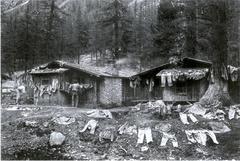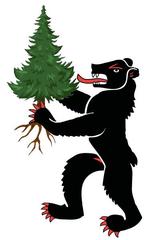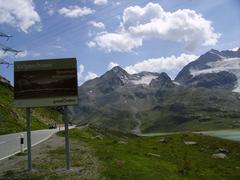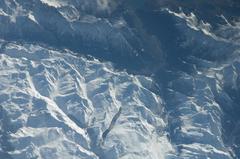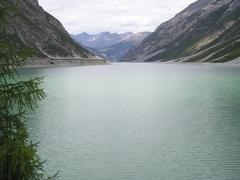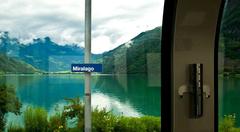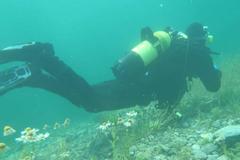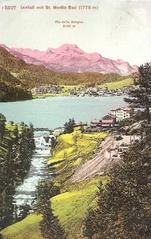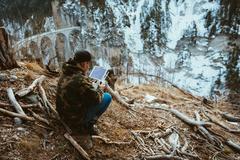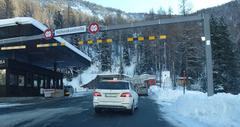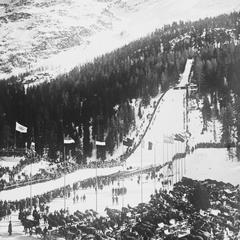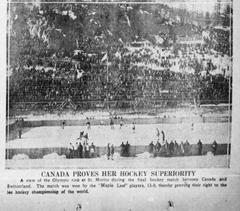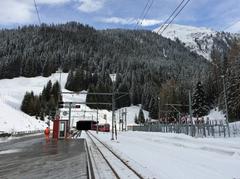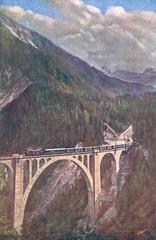Bishops Castle Chur: Visiting Hours, Tickets, and Historical Sites Guide
Date: 04/07/2025
Introduction
Bishop’s Castle, or Bischöfliches Schloss Chur, stands as an enduring symbol of ecclesiastical authority and regional identity in Chur, the capital of the Canton of the Grisons (Graubünden), Switzerland. With origins in the 12th and 13th centuries and later Baroque enhancements, this fortress commands Cathedral Hill and forms a pivotal part of the city’s historic core. The castle’s strategic position, architectural evolution, and preserved archives offer unique insights into the religious, political, and cultural development of one of Switzerland’s most diverse cantons. This guide details everything you need to plan a rewarding visit, including hours, ticketing, accessibility, guided tours, and must-see nearby attractions (Surses Tourism, Chur Tourism, Together In Switzerland).
Table of Contents
- Introduction
- Historical Overview
- Architectural Highlights
- Visiting Information
- Nearby Attractions
- Regional and Cultural Context
- Frequently Asked Questions (FAQ)
- Visuals and Interactive Resources
- Conclusion and Recommendations
- References
Historical Overview
Early Foundations and Ecclesiastical Power
The Grisons region’s history spans from Iron Age settlements to Roman rule, and later, the rise of powerful ecclesiastical institutions. By the early Middle Ages, the Diocese of Chur had become a formidable religious and political force, with the bishop wielding both spiritual and temporal authority. The construction of Bishop’s Castle in the 12th–13th centuries was a direct response to the need for a fortified residence and administrative hub, reflecting the turbulent dynamics of medieval Switzerland (en.romontsch-sursilvan.ch).
Construction and Strategic Role
Bishop’s Castle was strategically sited atop Cathedral Hill, overseeing Chur and the surrounding valleys. Its formidable walls, towers, and elevated position provided both defense and a statement of ecclesiastical dominance. The castle also housed important manuscripts and archives in its north tower, offering a rich resource for those interested in the region’s religious and administrative past (valsurses.ch).
Decline and Preservation
The formation of the Three Leagues in the late Middle Ages gradually diminished episcopal temporal power. After joining the Swiss Confederation in 1803, the castle shifted from a power center to a protected monument. Today, it is maintained by cantonal authorities as a vital piece of Switzerland’s cultural heritage (britannica.com).
Architectural Highlights
Exterior and Interior Features
- Exterior: Robust medieval stone walls, defensive towers, arrow slits, and Baroque flourishes define the castle’s silhouette. The structure harmonizes with the Alpine landscape and is visually integrated with the adjacent Cathedral of Saint Mary of the Assumption (aroundus.com).
- Interior: Grand halls with vaulted ceilings, exposed beams, and period fireplaces evoke the medieval and Baroque eras. The north tower preserves valuable manuscripts and documents, while strategic corridors and staircases reflect the castle’s dual residential and defensive functions (aroundus.com).
Decorative Details and Symbolism
Heraldic motifs, stained glass, and ecclesiastical symbols adorn both exterior and interior spaces, underscoring the bishop’s authority and the castle’s spiritual function. Exhibition spaces showcase religious artifacts, altarpieces, and regional artwork (schreiberschreibt.com).
Visiting Information
Hours and Tickets
- Chur (Cathedral Hill):
- Exterior and Courtyard: Open daily, 9:00 AM to 6:00 PM (extended in summer).
- Interior: Accessible only via guided tours or special events.
- Tickets: Courtyard and exterior free. Guided tours (interior access when available) require ticket purchase, available online or at the Chur Tourism office.
- Surses Region (if visiting the Surses site):
Open from 9:00 AM to 6:00 PM; ticketed admission applies.
Accessibility
- The Old Town is pedestrian-friendly, but cobblestones and uneven terrain may present challenges.
- Wheelchair-accessible paths are available around the castle grounds, though some historic interiors and towers have limited access.
- Parking is available outside the Old Town; public transport from Chur’s main station is recommended (Chur Tourism).
Guided Tours and Special Events
- Guided tours in multiple languages (including English) are offered regularly and provide access to interior areas.
- Private group and educational tours can be arranged in advance.
- Special events, such as medieval festivals, concerts, and exhibitions, are held in the courtyard seasonally. Check the Chur Tourism website for current schedules (Swiss Activities).
Tips for a Smooth Visit
- Wear comfortable shoes for walking uneven historic streets.
- Early mornings or late afternoons provide optimal lighting for photography and fewer crowds.
- Respect signage and privacy in administrative or residential sections.
- Modest attire is recommended, especially when visiting the adjacent cathedral.
Nearby Attractions
Enhance your visit by exploring:
- Chur Cathedral: An architectural masterpiece with Romanesque and Gothic features (Britannica).
- Raetian Museum: Exhibits on Graubünden’s history and culture (Raetisches Museum).
- Chur Old Town: Vibrant squares, shops, galleries, and cafes.
- Brambrüesch Mountain: Cable car access to panoramic hiking and nature trails (Swiss Activities).
- Regional Castles: Explore the castles of Sion and other historic sites for a broader perspective on Swiss ecclesiastical and feudal heritage (MySwitzerland).
Regional and Cultural Context
Multilingual and Alpine Traditions
Graubünden’s linguistic diversity (German, Romansh, Italian) is reflected in local signage, festivals, and daily life (Together In Switzerland). The area’s Walser heritage, alpine customs, and artisanal foods such as Capuns and Bündnerfleisch enrich the visitor experience (The Aficionados).
Sustainable Tourism
Recognized for eco-friendly initiatives and a welcoming community spirit, Graubünden balances heritage preservation with modern hospitality. Public transport, green accommodations, and local markets support both cultural continuity and environmental stewardship (Together In Switzerland).
Frequently Asked Questions (FAQ)
Q: What are Bishop’s Castle’s visiting hours?
A: Exterior and courtyard: 9:00 AM–6:00 PM daily. Interior: guided tours only; check schedules for availability.
Q: Are tickets required?
A: Exterior and courtyard are free; guided tours (including interior access) may require a ticket.
Q: Are guided tours available in English?
A: Yes, tours are offered in multiple languages, including English.
Q: Is the castle accessible for visitors with disabilities?
A: The grounds are mostly accessible, but some interiors and towers may pose challenges.
Q: Can I visit the castle interior independently?
A: No, interior access is limited to guided tours or special events.
Q: What else can I see nearby?
A: Chur Cathedral, Raetian Museum, Chur Old Town, Brambrüesch Mountain.
Visuals and Interactive Resources
- High-quality images and virtual tours are available on the Chur Tourism website.
- Alt text examples: “Panoramic view from Bishop’s Castle towers in Chur”, “Vaulted ceilings and timber beams inside Bishop’s Castle”.
- Interactive maps help plan your walking route through Chur’s Old Town.
Conclusion and Recommendations
Bishop’s Castle captures the very essence of Graubünden’s historical evolution—melding medieval fortification, ecclesiastical authority, and vibrant regional culture. With well-structured visiting hours, informative guided tours, and easy access to Chur’s attractions, the castle is a must-see for history buffs, culture seekers, and travelers. To further enrich your visit, explore additional sites, attend local events, and use digital resources such as the Audiala app for immersive audio guidance. For updated hours, tickets, and event details, consult official tourism platforms.
References
- Bishop’s Castle in Surses, Grisons: Visitor’s Guide and Historical Overview, Surses Tourism
- Bishop’s Castle Visiting Hours, Tickets, and Architectural Highlights: A Guide to Chur’s Historic Episcopal Palace, Aroundus
- Cultural and Regional Significance, Together In Switzerland
- Bishop’s Castle Chur: Visiting Hours, Tickets & Guide to Chur Historical Sites, Chur Tourism
- Historic Buildings in the Canton of Grisons, Schreiberschreibt
- Chur, Britannica
- MySwitzerland - Sion & Old Town
- Swiss Activities - Chur
- The Aficionados - Grisons
- Raetian Museum
- Grisons Overview
